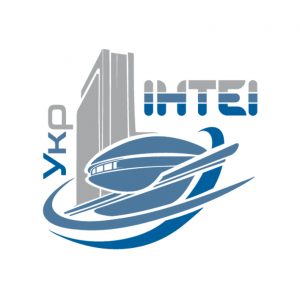http://doi.org/10.35668/2520-6524-2023-3-09
Ovcharov V. I. — D. Sc. in Engineering, Professor, Ukrainian State University of Chemical Technology, 8, Juria Haharina Ave, Dnipro, Ukraine, 49005; +38 (050) 975-47-17; dekanat_tvms@ukr.net; ResearcherID: DLR-8310-2022
Sokolova L. A. — PhD in Engineering, Associate Professor, Ukrainian State University of Chemical Technology, 8, Juria Haharina Ave, Dnipro, Ukraine, 49005; +38 (099) 724-59-21; sokolovalina18@gmail.com; ResearcherID: GQY-1704-2022
Panfilova O. A. — Master Student, Ukrainian State University of Chemical Technology, 8, Juria Haharina Ave, Dnipro, Ukraine, 49005; +38 (095) 087-09-71; olexandra.panfilova@gmail.com; ResearcherID: HGA-3551-2022
TRANSFER OF METHODS FOR DETERMINING THE VULCANIZATION CHARACTERISTICS OF ELASTOMER COMPOSITIONS
Abstract. Methods and standards of main rheokinetic parameters of elastomeric compounds vulcanization process are characterized in the paper, including international standard ASTM DIN 53529, which is successfully applied for solving tire production problems at “Rosava Tires”, Bila Tserkva. According to the experimental data taken by the vibrorheometer of rotorlesstype MDR 3000 Professional of the company MonTech Werkstoffprufmaschinen GmbH, a correlation was established between the characteristics of the isotherms of the elastomeric compositions based on non-stereoregular butadiene-α-methylstyrene rubber (at presence technological active additives), according to the ASTM DIN 53529 standard and according to other methods. The features of the selection of four parameters are shown, which are taken into account with the help of MonControl analytical security.
Keywords: vulcanization, vulcametry, elastomeric compositions, characteristics of crosslinking isotherms, correlation.
REFERENCES
- Blokh, H. A. (1978). Orhanycheskye uskorytely vulkanyzatsyy y vulkanyzuiushchye systemi dlia elastomerov [Organic vulcanization accelerators and vulcanizing systems for elastomers]. Lenynhrad, 240 p. [in Russ.].
- Hofmann, V. (1968). Vulkanyzatsyia y vulkanyzuiushchye ahenti [Vulcanization and vulcanizing agents]. Lenynhrad, 464 p. [in Russ.].
- Kuzmynskyi, A. S., Kavun, S. M., & Kyrpychev, V. P. (1976). Fyzyko-khymycheskye osnovi poluchenyia, pererabotky i prymenenyia elastomerov [Physical and chemical bases for the production, processing and use of elastomers]. Moscow, 368 p. [in Russ.].
- Ovcharov, V. I., Burmystr, M. V., & Smyrnov, A. H. et al.; Ovcharov, V. I. (Ed.). (2001). Svoistva rezynovikh smesei y rezyn: otsenka, rehulyrovanye, stabylyzatsyia [Properties of rubber compounds and rubbers: assessment, regulation, stabilization]. Moscow, 400 p. [in Russ.].
- Beliaeva V. A., Konharov H. S., & Piatetskaia Y. P. et al. (1972). Teplofizicheskye i vulkanizatsyonnie kharakterystiki rezynovikh smesei y ikh ispolzovanie v raschetakh rezhymov vulkanizatsii [Thermophysical and vulcanization characteristics of rubber compounds and their use in calculations of vulcanization modes]. Moscow, 81 p. [in Russ.].
- (1983). Testing of rubber and elastomers; measurement of vulcanization characteristics (curometry); general working principles: DIN 53529-1. Edition, Deutsches Institut fur Normung E. V. (DIN), Germany, 6 p.
- (1983). Testing of rubber and elastomers; measurement of vulcanization characteristics (curometry); evaluation of cross-linking isotherms in terms of reaction kinetics: DIN 53529-2. Edition, Deutsches Institut fur Normung E. V. (DIN), Germany. 6 p.
- (1983). Testing of rubbers; curometry; types of application of rotorless curemetrs: DIN 53529-1. Edition, Deutsches Institut fur Normung E. V. (DIN), Germany. 6 p.
- Moving Die Rheometer. MonTech Rubber Testing Solutions. Retrieved from: https://www.rubber-testing.com/products/moving-die-rheometer.
- Coran, A. Y. (1964). Rubb. Chem. Technol. 37 (3), 679–697.
- Sedov, A. S., Skok V. Y., & Kryvunchenko, L. N. et al. (1981). Metodika opredelenyia soderzhanyi seri i sulfenamydnoho uskorytelia v rezynovoi smesi [Method for determining the content of sulfur and sulfenamide accelerator in rubber compound]. Kauchuk i rezina [Rubber and rubber]. 10, 11–14. [in Russ.].
- Sedov, A. S., Skok. V. Y., & Evstratov, V. F. (1981). Metod rascheta sootnoshenyia konstant reaktsyy vulkanyzatsyy v induktsyonnom i hlavnom peryodakh po vulkametrycheskoi kryvoi [Method for calculating the ratio of vulcanization reaction constants in the induction and main periods according to the volcanic curve]. Kauchuk i rezina [Rubber and rubber]. 2, 10–12. [in Russ.].
- Dzhuv, A. E.; Allyhera H., & Setuna Y. (Eds.) (1967). Skorost vulkanyzatsyy [Vulcanization speed]. Vulkanyzatsyia elastomerov [Vulcanization of elastomers]. Moscow, 428 p. [in Russ.].
- Myhnanelly, E., & Alary, H. (1978). Sovremennie tendentsyy yspolzovanyia aktyvyrovannikh vulkanyzuiushchykh system, soderzhashchykh tyuram zamedlennoho deistvyia (PETD) [Current trends in the use of activated vulcanizing systems containing delayed action thiuram (PETD)]. Mezhdunarodnaia konferentsyia po kauchuku i rezyne [International conference on rubber and rubber]. Kiev, P. 16. [in Russ.].
- Panchenkov, H. M., & Lebedev, V. P. (1974). Khymycheskaia kynetyka i kataliz [Chemical kinetics and catalysis]. 2nd ed. Moscow, 592 p. [in Russ.].
- Batuner, L. M., & Pozyn, M. E. (1971). Matematycheskye metodi v khymycheskoi tekhnyke [Mathematical Methods in Chemical Engineering]. Lenyngrad, 824 p. [in Russ.].
- Bondar, A. G., & Statyuha, G. A. (1976). Planirovanie eksperimenta v himicheskoy tehnologii [Planning of expirement in chemical technology]. Kiev, 184 p. [in Russ.].

